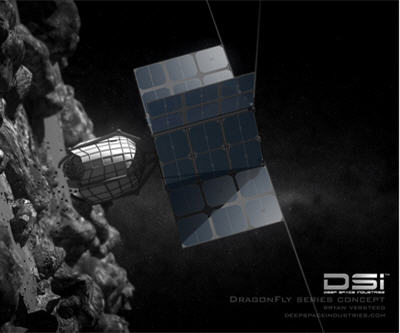
A newly launched asteroid miner is looking to the history of deep sea mining as it attempts to navigate laws governing exploitation of space.
Deep Space Industries, which rolled out its plan for space mining today at a news conference in the Santa Monica Museum of Flying in California, said the laws regarding resource mining beyond the earth are largely unformed, and the company will rely on co-operation between the main players. (Video embed of the press conference is below.)
“If you look at parallels, like deep sea mining, that went forward without a global treaty. The companies that wanted to do deep sea mining shook hands: ‘We won’t interfere with you if you don’t interfere with us’, that was the general approach going forward,” said David Gump, Deep Space’s chief executive officer.
Gump said the company will be relying on the 1967 space treaty, which he says will give the company the right to utilize space resources but will not grant the right to claim any sovereign territory.
“As time passes, we will build upon the 1967 outer space treaty that authorizes utilization. We will encourage congress to write some legislation to implement the 1967 treat.”
Deep Space Industries plans to send a fleet of asteroid-prospecting spacecraft, called FireFlies, out into the solar system to hunt for resources.
The company says that the FireFlies mass about 55 lbs. (25 kg) and will first be launched in 2015 on journeys of two to six months. Deep Space will be building a small fleet of the spacecraft using innovative miniature technologies, and working with NASA and other companies and groups to identify targets of opportunity.
Founder of Nautilus Minerals, Julian Malnic, attended the news conference.
“He bought his own ticket and flew up just to hang out with us,” said Rick Tumlinson, who pointed to Malnic during the news conference.
Tumlinson is chairman of the board Deep Space.
Image from Deep Space Industries